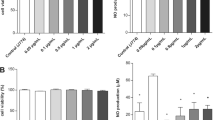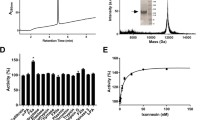Abstract
Rhipicephalus appendiculatus salivary glands extracts and saliva contain both biochemically active and pharmacological agents with various effector functions, including inhibition of host enzymes or inactivation of other host molecules that may be important in mounting tick rejection. The majority of these salivary biochemicals may interact with host antibodies at the feeding site or in the gut (or both), that interfere with proper tick attachment and feeding. The possible role of these biochemicals in tick feeding is discussed. Of particular interest is a salivary anticoagulant, which increased as feeding phase progressed and was present in all life cycle stages of the tick. Antibodies raised in rabbits against salivary gland extracts obtained from female R. appendiculatus fed on rabbits for various days, recognized several antigens on Western blots of salivary gland extracts, but failed to react with the purified tick salivary anticoagulant molecule. Thus, tick anticoagulant was poorly immunogenic compared to other salivary moieties. These results may help to explain the strategies adopted by the tick to circumvent biochemical detachment by the damaging host-protective immune responses, thereby enabling the vector to co-exist with its mammalian hosts.
Résumé
Les extraits de glandes salivaires et la salive de Rhipicephalus appendiculatus contiennent des substances biochimiques actives dont les diverses fonctions incluent entre autres l’inhibition des enzymes ou l’inactivation d’autres molécules de l’hôte; elles pourraient jouer un rôle important dans la rejection de la tique. La majorité de ces composés biochimiques pourraient réagir avec les anticorps de l’hôte au niveau de la prise de nourriture ou de l’estomac (ou les deux à la fois), et influencer la fixation de la tique sur l’hôte et la prise de nourriture. Le rôle possible de ces composés biochimiques au niveau de la tique est discuté. Un intérêt particulier est porté sur un anticoagulant contenu dans la salive et présent à tous les stades de développement du vecteur; le volume secrété de cet anticoagulant augmente au fur et à mesure que se poursuite le processus de prise de nourriture. Des anticorps produits à partir des lapins contre les extraits de glandes salivaires obtenus de la femelle de R. appendiculatus nourris plusiers jours sur de lapins, detectent plusiers antigéns grâce à la technique de “Western blot” utilisant des extraits de glandes salivaires, mais ne peuvant réagir avec la molécule purifiée de l’anticoagulant. Il a été déduit que l’anticoagulant contenu dans la salive de la tique est très peu immunogéne en comparaison avec d’autres molécules salivaires.
Ces résultats pourraient expliquer des stratégies adoptées par la tique pour empècher un détachment biochimique, par la destruction des réponses immunitaires de l’hôte, favorisant la coexistence du vecteur et de ses mamiféres hôtes.
Similar content being viewed by others
References
Allen J. R. (1973) Tick resistance: basophils in skin reactions of resistant guinea pigs. Int. J. Parasitol. 3, 195–200.
Allen J. R. and Humpreys S. J. (1979) Immunization of guinea pigs and cattle against ticks. Nature 280, 491–193.
Askenase P. W., Bagnall B. G. and Worms M. J. (1982) Cutaneous basophil — associated resistance of ectoparasites (ticks). I. Transfer with immune serum or immune cells. Immunology 45, 501–511.
Brown S. J., Graxiano F. M. and Askenase P. W. (1982) Immune serum transfer of cutaneous basophil-associated resistance to ticks: Mediation by 7s IgG antibodies. J. Immunol. 129, 2407–2412.
Brown S. J. and Askenase P. W. (1983) Immune rejection of ectoparasites (ticks) by T cell and IgG, antibody recruitment of basophils and eosinophils. Fed. Proc. 42, 1744–1749.
Brown S. J., Shapiro S.Z. and Askenase P.W. (1984) Characterization of tick antigens inducing host immune resistance. I. Immunization of guinea pigs with Amblyomma americanum-derived salivary gland extracts and identification of an important salivary gland protein antigen with guinea pig anti-tick antibodies. J. Immunol. 133, 3319–3325.
Burnette W.N. (1982) “Western blotting” Electrophoretic transfer of proteins from sodium dodecyl sulfate Polyacrylamide gels to unmodified nitrocellulose and radiographic detection with antibody and radioiodinated protein A. Anal. Biochem. 112, 195–203.
Buscher G. and Tangus B. (1986) Quantitative studies on Theileria parva in the salivary glands of Rhipicephalus appendiculatus adults: Quantitation and prediction of infection. International J. Parasitol. 93–100.
Chinery W. A. and Aitey-Smith E. (1977) Histamine blocking agent of the tick Rhipicephalus sanguineus sanguineus. Nature (London) 265, 366–367.
Dickinson R. G., O’Hagan J. E., Schultz M., Binnington K. C. and Hegarty M. P. (1976) Prostaglandin in the saliva of the cattle tick Boophilus microplus. Australian J. Exp. Biol. Med. Sci. 54, 475, 486.
Fawcett D. S., Buscher G. and Doxsey S. (1982) Salivary gland of the tick vector of East Coast Fever. III. The ultrastructure and sporogony in Theileria parva. Tissue and Cell 14, 183–206.
Ferreira S. H. (1972) Prostagladins, aspirin-like drugs and analgesia. Nature (London) 240, 200–209.
Fivaz G. H., Noral R. A. I. and Lawrence J. A. (1989) Transmission of Theileria parva bovis (strain boleni) to cattle resistant to the brown ear tick Rhipicephalus appendiculatus (Neuman). Trop. Anim. Health Prod. 21, 2129–2134.
Gebrand F. B. S. and Wolf-Bernhad Schill (1972) Radial diffusion in gel for microdetermination of enzymes. II. Plasminogen activator, elastase and non-specific proteases. Anal. Biochem. 48, 9–21.
Geczy A. F., Naughton M. A., Clegy J. B. and Hewetson R. W. (1971) Esterases and carbohydrate-splitting enzyme in the saliva of the cattle tick Boophilus microplus. J. Parasitol. 57, 437–438.
Gill H. S. (1984) Tick feeding and the development of immunity to Hyalomma anatolicum anatolicum. Ph.D. Thesis. University of Edinburgh.
Gill H. S., Boid R. and Ross C. A. (1986) Isolation and characterization of salivary antigens from Hyalomma anatolicum anatolicum. Parasite Immunol. 8, 11–25.
Gordon J. R. and Allen J. R. (1991) Factors V and VII anticoagulant activities in the salivary glands of feeding Dermacentor andersoniticks. J. parasitol. 167–170.
Gwynne H. L., Starnes W. L. and Behall F. J. (1976) Human liver aminopeptidase. In Methods in Enzymology. Academic Press London. Vol. XLV, pp. 495–504.
Hawkins R. I. and Hellman K. (1966) Factors affecting blood clotting from salivary glands and crop of Glossina austeni. Nature (London) 212, 738–739.
Hugli T. E. and Muller-Eberhard H. J. (1979) Anaphylatoxins: C3a and C5a. Adv. Immunol. 26, 1–48.
Jackson L. A. and Opdebeck J. P. (1990) Humoral immune responses of Hereford cattle vaccinated with midgut antigens of the cattle tick, Boophilus microplus. Parasite Immunol. 12, 141–151.
Jordan S. P., Waxman L., Smith D. E. and Vlasuk G. P. (1990) Tick anticoagulant peptide: Kinetic analysis of the recombinant inhibitor with blood coagulation factor Xa. Biochemistry 29, 11095–11100.
Irvin A. D. and Brocklesby D. W. (1970) Rearing and maintaining Rhipicephalus appendiculatus in the laboratory. J. Inst. Anim. Technol. 21, 3–112.
Laemmli U.K. (1970) Cleavage of structural proteins during the assembly of the head of bacteriophage T4. Nature 227, 680–685
Limo M. K., Voigt W. P., Tumboh-Oeri A. G., Njogu R. M. and Onesmo ole Moiyoi K. (1991) Purification and characterization of an anticoagulant from the salivary glands of the ixodid tick Rhiphicepalus appendiculatus. Exp. Parasitol. 72, 418–429.
Lowry O. H., Rosebrough N. J., Farr A. L. and Randall R. J. (1951) Protein measurement with the folin phenol reagent. J. Biol. Chem. 193, 265–275
Markwardt F. (1963) Blutgerinnungshemmende Wirkstoffe aus Blutsaugenden Tiernen. pp. 88–89. G. Fischer, Jena, West Germany.
McGowan M. J., Barker P. W., Homer J. J., McNew R. W. and Holscher K. H. (1981) Success of tick feeding on calves immunized with Amblyomma americanum (Acari:Ixodidae) extract. J. Med. Entomol. 18, 328–332.
Mongi A. O., Shapiro S. Z., Doyle J. J., and Cunninghum M. P. (1986) Immunization of rabbits with Rhipicephalus appendiculatus antigen-antibody complexes. Insect Sci. Applic. 4, 471–477.
Neeper M. P., Waxman L., Smith D. E., Schulam C. A., Sardana M., Ellis R. W., Schaffers L. W., Sieggl P. K. S. and Vlasuk G. P. (1990) Characterisation of recombinant tick anticoagulant peptide. The J. Biol. Chem. 265, 17746–17752.
Nyindo M., Essuman S. and Dhadialla T.S. (1989) Immunisation against ticks: Use of salivary gland antigens and infestation with Rhiphicephalus appendiculatus (Acari:Ixodidae) in rabbits. J. Med. Entomol. 26, 430–434.
Obenchain F. D. and Galun R. (1982) Preface. In Physiology of Ticks (Edited by Obenchain F. D. and Galun R.), pp. vii–ix. Pergamon Press, Oxford UK.
Purnell R. E. and Joyner L. P. (1968) The development of Theileria parva in the salivary glands of the tick Rhipicephalus appendiculatus. Parasitology 58, 725–732.
Ribeiro J. M. C., Makoul G. T., Levine J., Robin D. R., and Speilman A. (1985) Antihemostatic, antiinflammatory and immunosuppressive properties of the saliva of a tick, Ixodes dammini. J. Exp. Med. 161, 332–334.
Ribeiro J. M. C. (1989) Role of saliva in tick/host interactions. Exp. Appl. Acarol. 7, 15–20.
Riek R. F. (1962) Studies on the reactions of animals to infestation with ticks. VI. Resistance of cattle to infestation with Boophilus microplus (Canestrini). Australian J. Agric. Res. 13, 532–550.
Roberts J. A. and Kerr J. D. (1976) Boophilus microplus: passive transfer of resistance in cattle. J. Parasitol. 62, 485–488.
Shapiro S. Z., Voigt W. P. and Ellis J. A. (1989) Acquired resistance to ixodid ticks induced by cement antigen. Exp. Appl. Acarol. 7, 33–41.
Steelman C. D. (1976) Effects of external and internal arthropod parasites on domestic livestock production. Annu. Rev. Entomol. 21, 155–178.
Tatchell R. J. (1967) A modified method for obtaining tick oral secretion. J. Parasitol. 53, 1106–1107.
Tatchell R. J. (1967) The significance of host-parasite relationship in the feeding of the cattle tick. Boophilus microplus. Proceedings of the 2nd Int. Cong. Acarol. pp. 341–343.
Trager W. (1939) Acquired immunity to ticks. J. Parasitol. 25, 57–81.
Waxman L., Smith D. E., Arcuri K.E. and Vlasuk G. P. (1990) Tick anticoagulant peptide (TAP) is a novel inhibitor of blood coagulation factor Xa. Science 248, 593–595.
Webster M. and Prado E.S. (1970) Glandular kallikreins from horse and human urine and from hog pancreas. In Methods of Enzymology (Edited by Permann G. E. and Lorand L.), Vol. 19, 681–699. Academic Press, Orlando, FL.
Wikel S. K. (1981) The induction of host resistance to tick infestation with a salivary gland antigen. Am. J. Trop. Med. Hyg. 30, 284–288.
Wikel S. K. (1982) Immunological basis of Host resistance to ticks. In Physiology of Ticks (Edited by Obenchain F. D. and Galun R.), pp. 169–196. Pergamon Press, Oxford, UK.
Willadsen P. (1980) Immunity to ticks. Adv. Parasitol. 18, 293–313.
Willadsen P. and Kemp D. H. (1988) Vaccination with concealed antigens for tick control. Parasitol. Today 4, 196–198.
Willadsen P., Riding G. A., McKenna R. V., Kemp D. H., Tell M. R. L., Nielsen J. N., Lahnstein J., CobonG. S. and Gough J. M. (1989) Immunologic control of a parasitic arthropod. Identification of a protective antigen from Boophilus microplus. J. Immunol. 143, 1346–1351.
Willadsen P. and Riding G. A. (1980) On the biological role of a proteolytic enzyme inhibitor from the ectoparasite tick Boophilus microplus. Biochem. J. 189, 295–303.
Wong J. Y. M. and Opdebeeck J. P. (1989) Protective efficacy of antigens solubilized from gut membrane of the cattle tick Boophilus microplus. Parasite Immunol. 12, 75–79.
Author information
Authors and Affiliations
Rights and permissions
About this article
Cite this article
Limo, M.K.H., Seldin, D.C., Voigt, W.P. et al. Rhipicephalus Appendiculatus Salivary Glands: Identification of Bioactive Molecules and Antigens. Int J Trop Insect Sci 14, 235–245 (1993). https://doi.org/10.1017/S1742758400014685
Received:
Accepted:
Published:
Issue Date:
DOI: https://doi.org/10.1017/S1742758400014685
Key Words
- Ticks
- Rhipicephalus appendiculatus
- salivary gland extracts
- saliva
- bioactive molecules
- anticoagulant
- immunoblotting
- antigens
- immunization




